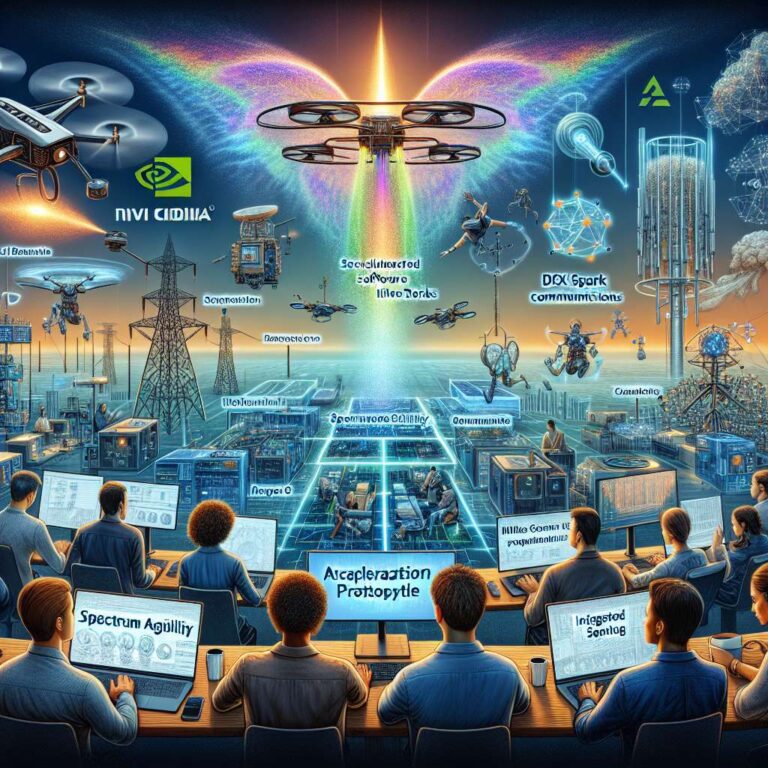Nvidia is making a significant open-source push for telecom, announcing that its Aerial software will be released under Apache 2.0 licensing starting in December. The move brings the suite to a range of Nvidia platforms, including the DGX Spark system, and is positioned to let Artificial Intelligence-RAN and wireless researchers go from rapid prototyping to product development in hours rather than months. Nvidia frames this as a shift toward open collaboration in building Artificial Intelligence-native 5G and 6G networks, contrasting it with past reliance on licensed software and proprietary hardware. The company points to its previously open-sourced Sionna toolkit, which has surpassed 200,000 downloads and 500 citations, as evidence of momentum.
The open-source release spans Aerial CUDA-Accelerated RAN, Aerial Omniverse Digital Twin and the new Aerial Framework, with the digital twin slated for March 2026. Capabilities include a framework that converts Python into high-performance CUDA code for Aerial RAN platforms; neural models such as advanced channel estimation to improve wireless performance; a dApp framework that exposes secure, real-time physical layer data so third-party algorithms can adapt RAN behavior; and customizable pipelines that let developers swap modules to build full-stack RAN software. Nvidia says these components have already enabled the first made-in-America Artificial Intelligence-native wireless stack, demonstrating early 6G use cases like spectrum agility and integrated sensing and communications. The company adds that opening Aerial will invite developers beyond telecom to create applications for mobile networks, including agentic and physical Artificial Intelligence workloads that require mission-critical performance, and will support broader U.S. leadership in open source.
Nvidia is pairing the code release with hardware and tools to accelerate hands-on work. DGX Spark, described as the world’s smallest Artificial Intelligence supercomputer, is now available for Artificial Intelligence-native 5G and 6G research and can run Aerial or Sionna software, whether purchased from manufacturers or accessed via Nvidia DGX Cloud. The Sionna Research Kit now supports DGX Spark alongside Jetson AGX Orin, providing a portable, lab-in-a-box setup that includes user equipment, antennas, radio systems and core networks, enabling researchers to validate algorithm performance over the air and stand up a live 5G network in an afternoon. The Aerial Testbed adds over-the-air testing for CUDA-accelerated, full-stack networks on DGX Spark and GH200 Grace Hopper, with tight integration between network digital twins and live deployments. Dell Technologies is also introducing Dell Pro Max with GB10, a DGX Spark-based system aimed at intensive 5G and 6G workloads for testing, simulation and validation.
Nvidia says thousands of innovators already tap its Artificial Intelligence Aerial portfolio, including Northeastern University, Virginia Tech, Arizona State University and DeepSig, as well as researchers at WINSLab and LIDS at MIT working on Artificial Intelligence-driven advances for 6G and standards. The AI-RAN Alliance, comprising more than 100 telecom pioneers, is using the ecosystem across work groups, labs, benchmarking and demos. According to the alliance’s chair, opening Aerial and leveraging DGX Spark enables modular, software-defined wireless systems from lab to live environments, boosting spectrum efficiency, enhancing network performance and powering new Artificial Intelligence applications. Nvidia positions this as a pivotal milestone for an inclusive, software-defined and Artificial Intelligence-powered future, with collaboration moving at the speed of Artificial Intelligence and influencing national competitiveness and global standards.

